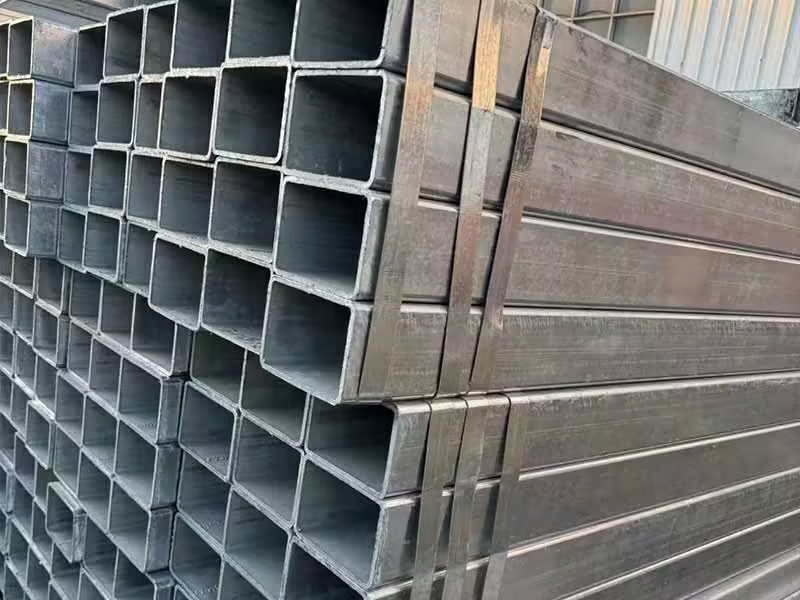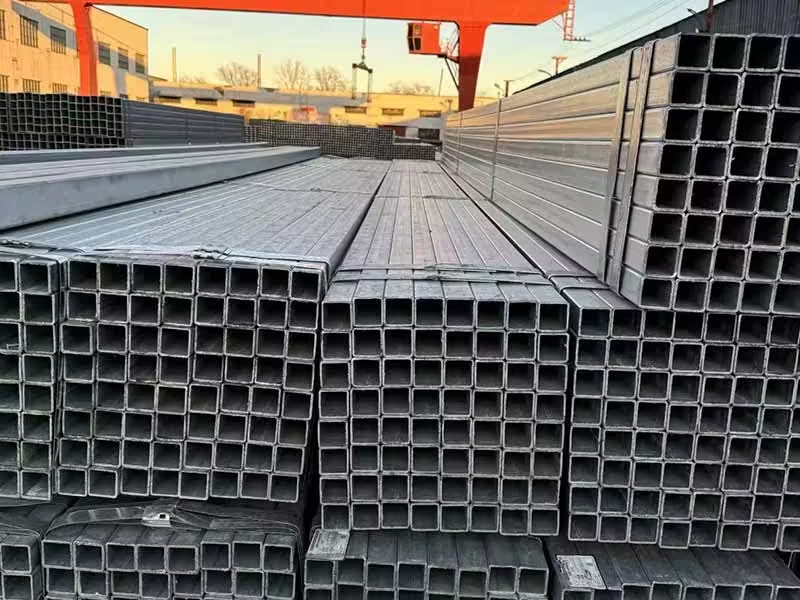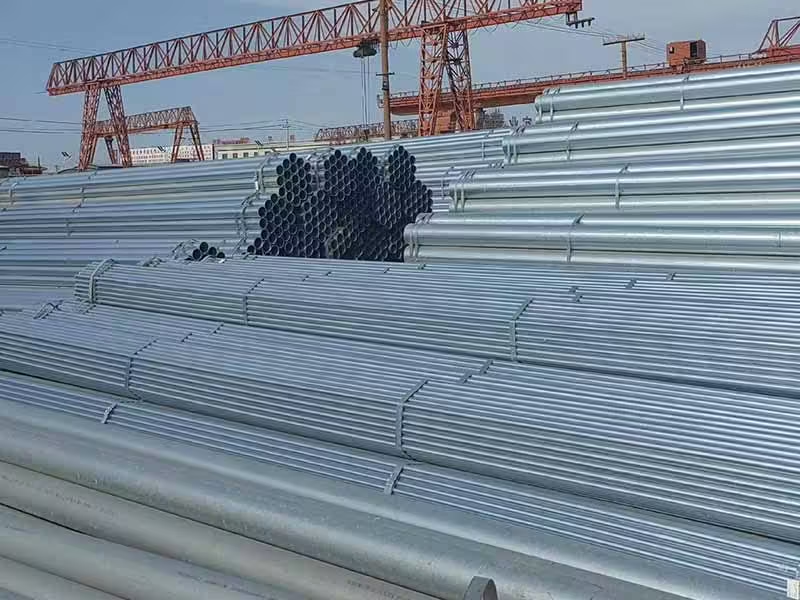Welcome to My Blog!
Before we dive into the content, I’d love for you to join me on my social media platforms where I share more insights, engage with the community, and post updates. Here’s how you can connect with me:
Facebook:https://www.facebook.com/profile.php?id=61571539990739
Now, let’s get started on our journey together. I hope you find the content here insightful, engaging, and valuable.
Table of Contents
Introduction
A galvanized metal pipe is a steel pipe coated with a layer of zinc through a process called galvanization, which protects the underlying steel from corrosion and extends its lifespan. The zinc coating acts as a sacrificial anode, corroding before the steel, making galvanized metal pipes ideal for environments exposed to moisture or harsh conditions.
This guide delves into the pros and cons of galvanized metal pipes, their manufacturing, applications, and maintenance, offering a detailed overview for professionals and consumers.
Why Understanding Galvanized Metal Pipe Pros and Cons Matters

Ensuring Long-Term Performance
Understanding the pros and cons of galvanized metal pipes ensures they are used in applications where their corrosion resistance and durability shine, such as outdoor water lines or structural supports. This knowledge prevents premature failures and costly replacements, enhancing project longevity.
Balancing Cost and Functionality
Galvanized metal pipes are often more affordable than alternatives like stainless steel or copper, but their limitations, such as potential corrosion over time, must be weighed. Evaluating the pros and cons of galvanized metal pipes helps stakeholders balance initial costs with long-term functionality.
Meeting Regulatory and Safety Standards
In plumbing and construction, compliance with building codes and safety standards is critical. Knowing the pros and cons of galvanized metal pipes ensures their use aligns with regulations, particularly for potable water systems, where material safety is paramount.
How Galvanized Metal Pipes Are Made
Steel Pipe Fabrication for Galvanized Metal Pipes
The production of a galvanized metal pipe begins with fabricating a steel pipe, typically through seamless or welded methods. Carbon steel is rolled and welded into a cylindrical shape, with specifications for diameter, wall thickness, and length tailored to the intended application. This initial step ensures the galvanized metal pipe has the structural integrity needed for demanding environments.
Hot-Dip Galvanization Process
The defining feature of a galvanized metal pipe is its zinc coating, applied through hot-dip galvanization. The steel pipe is cleaned to remove impurities, then submerged in a bath of molten zinc at approximately 450°C (842°F). The zinc bonds metallurgically with the steel, forming a protective layer 50–150 micrometers thick. This process in galvanized metal pipe manufacturing ensures robust corrosion resistance.
Alternative Galvanization Methods
In addition to hot-dip galvanization, some galvanized metal pipes are produced using electro-galvanization, where a thinner zinc layer is applied via an electric current. While less durable, this method is used for pipes in less corrosive environments, offering a cost-effective option in galvanized metal pipe production.
Quality Control and Finishing
After galvanization, galvanized metal pipes undergo quality control checks, including visual inspections for coating uniformity and thickness measurements using magnetic gauges. Finishing processes, such as threading for plumbing connections or cutting to standard lengths, prepare the pipes for distribution. These steps ensure the galvanized metal pipe meets industry standards like ASTM A123 or ISO 1461.
Pros of Galvanized Metal Pipes
Superior Corrosion Resistance
A primary advantage of a galvanized metal pipe is its zinc coating, which protects the steel from rust in moist or humid conditions. This makes galvanized metal pipes ideal for outdoor applications like water supply lines, irrigation systems, or structural scaffolding, where exposure to the elements is common.
High Durability and Strength
Galvanized metal pipes inherit the inherent strength of steel, capable of withstanding high pressure and mechanical stress. With proper maintenance, they can last 20–50 years, making them a durable choice for plumbing, gas lines, and industrial frameworks, a key pro of galvanized metal pipes.
Wide Availability and Standardization
Galvanized metal pipes are produced in standard sizes (e.g., ½-inch to 6-inch diameters) and lengths, ensuring wide availability and compatibility with existing systems. This standardization simplifies procurement and installation, enhancing the appeal of galvanized metal pipes for contractors.
Versatility Across Applications
The versatility of galvanized metal pipes allows their use in diverse applications, from potable water systems and gas pipelines to structural supports and fencing. Their ability to handle various fluids and environmental conditions underscores their utility, a significant benefit of galvanized metal pipes.
Cons of Galvanized Metal Pipes
Potential for Internal Corrosion
Over time, the zinc coating inside a galvanized metal pipe can erode, exposing the steel to corrosion, particularly in water lines with aggressive chemistry (e.g., high acidity). This can lead to rust buildup, reduced flow, and potential contamination, a notable con of galvanized metal pipes in plumbing.
Limited Lifespan Compared to Alternatives
While durable, galvanized metal pipes have a shorter lifespan than modern alternatives like copper (50–70 years) or PEX (40–50 years) in certain applications. Internal corrosion and zinc degradation can necessitate replacement after 20–40 years, a limitation of galvanized metal pipes.
Installation and Maintenance Challenges
Galvanized metal pipes are heavier than alternatives like PEX, making installation more labor-intensive. They also require regular maintenance, such as flushing to remove sediment or replacing corroded sections, which adds to the long-term costs of using galvanized metal pipes.
Health Concerns in Potable Water Systems
In older galvanized metal pipes, corrosion can release zinc or lead (from historical fittings) into water, posing health risks. Modern standards mitigate this, but the potential for contamination remains a concern, making galvanized metal pipes less favored for potable water in some regions.
Comparison Table of Galvanized Metal Pipe Pros and Cons
| Aspect | Pro/Con | Details | Applications Affected | Considerations |
|---|---|---|---|---|
| Corrosion Resistance | Pro | Zinc coating protects against rust | Outdoor water lines, scaffolding | Effective in moist environments |
| Durability | Pro | Strong steel, 20–50 year lifespan | Gas lines, structural supports | Suitable for high-pressure systems |
| Availability | Pro | Standard sizes, widely available | Plumbing, fencing | Simplifies procurement, installation |
| Internal Corrosion | Con | Zinc erosion leads to rust buildup | Potable water systems | Regular maintenance required |
| Lifespan | Con | Shorter than copper/PEX in some cases | Residential plumbing | May need replacement after 20–40 years |
| Installation Difficulty | Con | Heavy, labor-intensive | Large-scale plumbing systems | Increases labor time, costs |
| Health Risks | Con | Potential zinc/lead leaching | Older potable water systems | Compliance with modern standards needed |
This table summarizes the pros and cons of galvanized metal pipes, detailing their characteristics, affected applications, and key considerations. It serves as a quick reference for evaluating their suitability for specific projects.
Applications of Galvanized Metal Pipes


Plumbing and Water Supply
Galvanized metal pipes were historically used for residential and commercial water supply lines due to their corrosion resistance and strength. While less common today for potable water, they remain viable for non-potable systems, such as fire sprinklers or industrial water lines, where the durability of galvanized metal pipes is advantageous.
Gas and Fluid Transport
In gas distribution, galvanized metal pipes transport natural gas or propane, leveraging their pressure resistance and corrosion protection. They are also used for industrial fluids, such as cooling water or non-corrosive chemicals, showcasing the versatility of galvanized metal pipes in fluid transport.
Construction and Structural Frameworks
Galvanized metal pipes serve as structural components in construction, such as scaffolding, railings, or framework for greenhouses and barns. Their strength and weather resistance make them ideal for outdoor structural applications, a key use of galvanized metal pipes.
Agricultural and Irrigation Systems
In agriculture, galvanized metal pipes are used for irrigation systems, delivering water to crops in fields exposed to moisture and soil. Their corrosion resistance ensures reliable performance, making galvanized metal pipes a practical choice for rural and farming applications.
Factors to Consider When Choosing Galvanized Metal Pipes
Application Environment
The environment, such as exposure to moisture, chemicals, or temperature extremes, influences the suitability of galvanized metal pipes. They excel in moderately corrosive settings but may require additional coatings in highly acidic or saline conditions, a critical factor in material selection.
Regulatory Compliance
Building codes, such as those from the International Plumbing Code (IPC), may restrict galvanized metal pipes for potable water due to health concerns. Ensuring compliance with local regulations is essential when considering galvanized metal pipes for plumbing or other regulated applications.
Maintenance Requirements
Galvanized metal pipes require periodic maintenance, such as inspecting for corrosion, flushing systems to remove sediment, or replacing fittings. Understanding these requirements helps assess the long-term viability of galvanized metal pipes for specific projects.
Comparison with Alternatives
Comparing galvanized metal pipes to alternatives like copper, PEX, or stainless steel is crucial. For example, PEX is lighter and easier to install, while copper offers a longer lifespan for potable water. Weighing these options ensures galvanized metal pipes are chosen where they provide the most value.
Maintenance and Care for Galvanized Metal Pipes

Regular Inspections for Corrosion
Periodic inspections of galvanized metal pipes, using visual checks or non-destructive testing (e.g., ultrasonic thickness gauges), detect corrosion or zinc coating degradation. Early identification allows for timely repairs, extending the lifespan of galvanized metal pipes in service.
Flushing and Cleaning
For water lines, flushing galvanized metal pipes removes rust, sediment, or scale buildup, maintaining flow and water quality. Chemical cleaning with approved solutions can further mitigate internal corrosion, a key maintenance practice for galvanized metal pipes.
Protective Coatings and Repairs
Applying additional coatings, such as epoxy linings, can enhance the corrosion resistance of galvanized metal pipes in aggressive environments. Replacing corroded sections or fittings with compatible materials prevents leaks and ensures system integrity.
Advancements in Galvanized Metal Pipe Technology
Improved Galvanization Techniques
Modern galvanization methods, such as continuous hot-dip processes, produce more uniform and durable zinc coatings on galvanized metal pipes. These advancements enhance corrosion resistance and reduce defects, improving reliability in demanding applications.
Alloyed Zinc Coatings
Research into zinc alloys, incorporating aluminum or magnesium, is enhancing the performance of galvanized metal pipes. These coatings offer superior corrosion resistance and self-healing properties, extending the lifespan of galvanized metal pipes in harsh environments.
Sustainable Manufacturing Practices
Sustainable production, including recycling scrap steel and using energy-efficient galvanization processes, is reshaping galvanized metal pipe manufacturing. These practices reduce environmental impact, aligning with global sustainability goals and appealing to eco-conscious industries.
Conclusion
Galvanized metal pipes remain a reliable and versatile choice for plumbing, construction, agriculture, and industrial applications, offering corrosion resistance, durability, and affordability. However, their potential for internal corrosion, shorter lifespan compared to modern alternatives, and maintenance demands require careful consideration.
As advancements in galvanization and sustainable manufacturing continue to evolve, galvanized metal pipes will maintain their relevance, providing robust solutions for diverse infrastructure needs. If you want to know more product information, you can contact us.
FAQ
What is a galvanized metal pipe?
A galvanized metal pipe is a steel pipe coated with a zinc layer through galvanization to protect against corrosion, used in plumbing, gas lines, construction, and irrigation systems.
What are the main advantages of galvanized metal pipes?
Galvanized metal pipes offer corrosion resistance, high durability, wide availability in standard sizes, and versatility for applications like water supply, structural supports, and gas transport.
What are the disadvantages of galvanized metal pipes?
Disadvantages include potential internal corrosion, a shorter lifespan than copper or PEX, labor-intensive installation, and health concerns from zinc or lead leaching in older potable water systems.
Are galvanized metal pipes safe for drinking water?
Modern galvanized metal pipes are generally safe if compliant with standards, but older pipes may leach zinc or lead, making alternatives like copper or PEX preferred for potable water.
How long do galvanized metal pipes last?
Galvanized metal pipes typically last 20–50 years, depending on water chemistry, maintenance, and environmental conditions, with regular inspections extending their lifespan.

